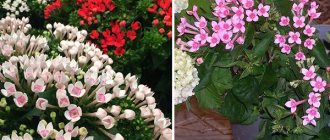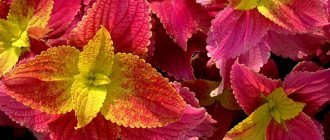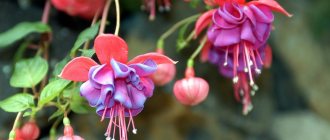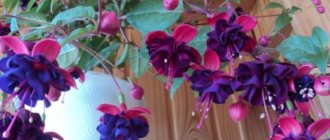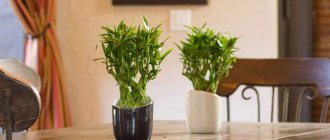If you are looking for unusual plants to grow in your home, then Albuka spiral is simply an ideal option even for novice gardeners.
The South African pearl will be the highlight of any collection of indoor flowers.
Albuca spiralis is one of a kind and completely unknown until recently, an amazing species of bulbous succulents from the Asparagaceae family.
It deserves special attention due to its unusual leaves, which curl like a small corkscrew.
This strange shape protects them from overheating and evaporation of moisture in the sunny African climate and allows air to circulate freely around the succulent.
The growing season of Albuca spiralis occurs in the winter months, during which it produces a basal rosette of 15-20 leaves twisted in a spiral.
The more sun a plant receives, the more its leaves curl.
Flowers appear in April-May on thick fleshy peduncles, the height of which can reach 40-50 cm. They are collected in a spike-shaped inflorescence of 10-20 bell-shaped greenish-yellow flowers, which have a light vanilla aroma.
Flowering duration is about 10 weeks.
With the beginning of summer, Albuka spiral begins a period of rest. At this stage, all the leaves die off and the bulb shows no signs of life.
During dormancy, the plant practically does not need watering.
Growing Albuka at home
For successful cultivation, it is necessary to provide the plant with an imitation of its natural habitat and natural development cycle.
Indoor exposure is only suitable in the south, since the bulbous succulent needs a lot of sunny color.
On cloudy days, illumination with special phytolamps with an optimal illumination range from 2500 to 3500 lux is desirable.
The main difficulty in care is providing cool conditions during the growing season. The temperature during the day should not exceed +16 °C, and at night about + 5-10 °C.
These are the temperatures that prevail in the desert during the rainy season, which is when the plant actively grows.
To provoke flowering in April, during the dormant period (November-December) it is necessary to provide the following conditions with differences in day and night temperatures:
- during the day - no higher than + 10 + 15 °C;
- at night - +6 + 10 °C is permissible.
Rest period and transplantation
Albuca blooms in April-May, the flowering period lasts about 10 weeks. After this, begin to reduce watering so that the leaves droop, stop feeding. It needs to be replanted at the end of autumn, after which minimal soil moisture is required (watering once a month is enough). During the dormant period, keep it cool, maintain daily temperature fluctuations, and light in partial shade or diffused. Starting in March, place it in a brighter place and resume watering.
For planting, take small pots, the diameter of which is 4-5 cm larger than the bulb itself. Place drainage at the bottom (pebbles, pebbles, expanded clay). The soil needs to be light, loose, permeable to air and water. Suitable substrate for succulents. If you prepare the soil mixture yourself, use turf, leaf soil and coarse sand in equal proportions.
Deepen the bulb to your own size, but this is not necessary: many people prefer to deepen it only a third or two-thirds in height in order to admire the beautiful juicy “turnip”. Just remember that then the baby bulbs will not take root, and they will have to be removed and rooted yourself.
Landing
To plant Albuca spiralis, choose flat, shallow containers or pots, leaving half the bulb above the ground. The procedure is best carried out in early autumn.
The succulent grows on light, well-drained, sandy or rocky soils, so add coarse river sand (1:1) to the universal succulent substrate and provide a good drainage layer at the bottom of the expanded clay pot.
Beautiful small stones on the soil surface and planting low-growing succulent species as companions will allow the pot to look decorative even during the dormant period of Albuca spiral.
Diseases and pests
Albuca has good immunity to some diseases and pests, but not everyone manages to grow a flower without errors in care and planting. Such flaws lead to the following problems:
- Root mite. Affects bulbs and root system. Insectoacaricidal agents will help.
- Spider mite. Destroys the leaf plate. Treatment Fitoverm, Actellik.
- Bulb rotting. Reasons: stagnation of water in the soil and waterlogging.
- Brown leaves. There is rust and damage to the sheet plate. Disposal of sick individuals and treatment with fungicides is required.
Preventive measures: calcination of the soil, drainage, seeds, root system.
Reproduction
It reproduces well by seeds, which produce flowering plants in 3-4 years. Only fresh seed is suitable for planting, since after 6 months it loses its ability to germinate.
Important! Albuca seeds do not remain viable for long - only six months
When planting, press large seeds to the surface of the soil, only slightly deepening them, and cover them with film.
The optimal soil temperature for germination is 26-28 °C. Water very carefully so as not to over-wet the substrate.
If all conditions are met, seedlings will appear in two weeks.
We begin to fertilize only when a small bulb is formed, and this happens already in the first year of the seedlings’ life.
Another method of propagation is vegetative, in which the “children” of the mother bulb are separated and planted in separate small pots. With this method of propagation, the plant retains all the characteristics inherent to the variety - the shape of the leaves and the aroma of the flowers.
The most popular variety that can be found on sale is “Frizzle Sizzle”, which was obtained by Dutch breeders in 2007 using the in vitro method. It differs from the species in having more curled leaves.
After a dormant period, a bulb about 8 cm in diameter develops into a compact rosette of numerous spiral leaves, the length of which when expanded is up to 16 centimeters. The diameter of the entire rosette, as a rule, does not exceed 15 cm. The height of the peduncles is about 20 cm.
Other varieties for indoor growing
In addition to spiral albuca, three more varieties can be grown on the windowsill, namely:
bract
Albuca bracteata is a greenish bulb with a waxy coating. The leaves are striped, large; reach a length of up to a meter. This variety blooms throughout the summer. There are more than a hundred flowers on the brush. The petals are white, with a green stripe. Due to its healing properties, the leaves are used in medicine. The plant is known among gardeners as Indian onion.
Read more about home use and growing the plant here.
Nelson
Albuca nelsonii is the most common species for home cultivation. The height of the plant is up to 75 cm. When flowering, white branches grow on the albuca; when they fade, a cherry stripe appears.
Canadian
Albuca canadensis - has an interesting flower structure. The inner petals are collected at the base of the inflorescence, covering the stamens, the outer ones are unfolded. The leaves are bright green, the flowers are yellow-white. Blooms towards the end of spring. Plant size 30 cm in height, leaf length 15 cm. This species loves watering.
Possible problems
By carefully examining the plant and soil, you can quickly notice signs of disease or lack of care:
- Leaves do not curl - poor lighting, low temperature, excessive feeding, characteristics of the species (we will look at it in more detail below).
- Rotting of bulbs - waterlogging of the soil mixture, stagnation of water. It is unlikely that such a bulb will be saved, but for prevention it is necessary to carefully regulate watering.
- Leaves with brown spots are a fungal disease. Affected leaves must be removed and the plant treated with fungicides.
- Falling leaves - strong shading, sudden temperature changes, cold draft, excess or lack of moisture.
- The plant is stretched, but does not bloom - poor lighting.
- A lot of greenery and no flowers - excess nitrogen fertilizers.
Reasons for the straightening of leaves in Albuka
One of the most common problems that Albuca spiralis owners encounter is the loss of spirals in the leaves. Plants become straight and no longer spiral or curled. This can be especially unpleasant for owners who purchased Albuka specifically because of its unique shape.
One of the things that causes Frizzle Sizzle to straighten its leaves is when the plant begins to flower. Some specimens can bloom without straightening, while others cannot.
The same plant can behave differently in different growing seasons. One season it produces flowers without losing the spiral shape of the leaves, and the next season it loses its shape.
Once straightened, the leaves will not be able to curl up and form a spiral shape.
The only way to bring the spiral leaves back is to allow the plant to go dormant. Stop watering in the summer, let the leaves die back and leave the bulb. As it grows, the new leaves will take on a spiral shape.
If you don't want your Albuka to lose her curls, you can trim the bud when it appears.
How to care for a coffee tree at home
Many plant owners have grown Albuca spiralis for many years without any problems. The only thing to watch out for is root rot caused by overwatering.
Albuca is a magical little plant with unique spiral leaves that requires little care. However, general care tips will ensure that this captivating plant remains happy and healthy both indoors and outdoors.
Author: Yulia Zakrevskaya Updated: January 04, 2021
Comments
Nina 12/01/2018 18:43 good and informative article.
where can I buy such a plant or at least seeds? Answer
Julia 12/02/2018 10:18 Seeds and flowers can often be seen in online stores.
Answer
Update list of comments
Flowering albuca spiral
How spiral albuca blooms photo
The flowering stem is dense, covered with a bluish coating. A dense or loose spike-shaped inflorescence is formed at the top. The corolla is bell-shaped, six-petalled, 3-4 cm in diameter, about 20 flowers. The flowers are not bright, white yellowish or greenish, and there may be a wide brown or light green stripe along the petal.
The fruit is a capsule with black shiny seeds. The flowering period occurs in May-August, in some species it is accompanied by a subtle aroma of vanilla, which appears at night.
Heat-loving albuca is grown indoors. If desired, it can be cultivated in the garden during the spring and summer seasons. They are planted in heated greenhouses already in March, and directly in open ground under the open sky - with the establishment of real heat. The soil required is nutritious and loose, well drained. Plant to a depth of no more than 5 cm, the distance between individual plants is 8 cm. After flowering, wait until the leaves dry, dig up the bulbs, plant in pots and store in a cool place until spring.
This article is dedicated to the indoor album, everything is described in detail below.
Description
Albuca spiralis (not every flower shop sells such a plant) belongs to the representatives of the Asparagus family and is a perennial succulent plant. The bulb is slightly flattened, round in shape, whitish in color, up to 5 cm in diameter. The root system is fibrous, white. In albuca, the peduncle reaches a length of 60 cm and has a bluish tint. Flowers of 10–20 are collected in tassels. Each flower, 3 cm in diameter, is located on a peduncle and has a small pointed bract.
The corolla is greenish or slightly yellow, shaped like a bell with six lobes in the form of petals, which are arranged in two circles: the first three are horizontal, and the others are bent down and slightly cover the pistil and long stamens. Petals with a yellow edge and a greenish stripe. Some types of albuca produce a creamy vanilla aroma. After flowering, a box is formed in place of the flower, in which there are shiny black spiral albuca seeds. Fleshy leaves of rich bright green color form a spiral at the ends. At the base of the plant, leaves of 15–20 pieces are located in a rosette. The unusual shape of the leaves helps the plant retain moisture during hot and dry periods.
Light and temperature
Albuca is used to a lot of light in its native range. Full sun is best, but partial sun may be ok if it is constant. 5-7 hours is absolutely necessary, but it’s even better to have more sun.
Too little light will cause the leaves to curl and become long and wavy. If you don't have a reliable light source in your home, consider installing a grow light.
If you are growing plants in containers, consider placing them near a south-facing window or other location where they are guaranteed to receive plenty of natural sunlight. Rotate the plant a quarter turn every day so all the leaves are facing the sunlight!
Albuka prefers a temperature of at least 18 C. However, in order to obtain viable seeds, it is necessary that it drop to lower values in winter. If possible, avoid completely freezing conditions as this will damage the plant.
For best growth, keep the temperature between 18-20 C. This is often ideally combined with indoor climate control systems, making plant care easier!
It should be noted that in the height of summer, the curling leaves can sometimes get sunburned if the sun is too intense.
Video review
Albuca is a representative of herbaceous plants, belongs to the Asparagus family. The place of origin of this exotic plant is considered to be the territory of South Africa. Albuca earned its name because of its unusual ability to produce beautiful white flowers on a long peduncle.
Albuca spiralis is a perennial succulent plant. She is a representative of the bulbous species. The bulb is white in color, round and slightly flattened, diameter is about 5 cm.
The leaves are collected near the base of the bulb in a rosette, 15-20 pieces on each plant. Leaf length is no more than 30-35 cm. The leaves are green, fleshy, and curled into a tight spiral at the ends. The plant received this unusual leaf shape due to its ability to retain moisture in hot weather. It is thanks to the shape of the spiral that moisture practically does not evaporate from the surface of the sheet.
The peduncle is bluish in color, with dense flesh to the touch, about 60 cm in length. The flowers are collected in a tassel of 10-20 pieces each. The diameter of the flower is about 3 cm, located on a peduncle up to 4 cm long. The structure of the flower is also unusual. Petals have a yellow edge and a green stripe. Not all types of albuca are endowed with fragrant flowers. But those that smell have a unique aroma of creamy vanilla. After flowering, each flower forms a capsule containing shiny and black seeds.
Albuka care
Caring for albuca is not difficult if the plant is located in the right area, where the soil drains well, is moderately fertile and has average moisture. The biggest problem when growing albuca is bulb rotting from excessive moisture and frost damage.
Because of its unique and natural schedule, albuca is practically made for indoor growing. Controlled temperatures can really allow this plant to thrive! But there are a few more things you need to know to keep your album happy.
Watering and humidity
The key to successfully growing albuca is drainage. Although the plant does need water, it, like other bulbous plants, is at great risk of bulb rot. In addition, albuca needs to be watered a little differently than other plants.
While most plants need more water when it gets hot, this is when albuca needs least watering. From early summer through fall, the soil should be barely damp to the touch. Let the plant dry out between waterings.
As it gets cooler outside, start watering consistently. Keep the soil evenly moist but not soggy. Do not leave the pot in water as this can make the soil too wet and cause the bulbs to rot. Instead, make sure excess moisture drains away easily.
Don't overdo it with watering or humidity. Too much moisture will make the plant's leaves soft. Albuca tries to retain water in its leaves, and too much can also stop the beautiful spirals from forming!
Don't worry about adding moisture to Albuca, it simply doesn't need it.



